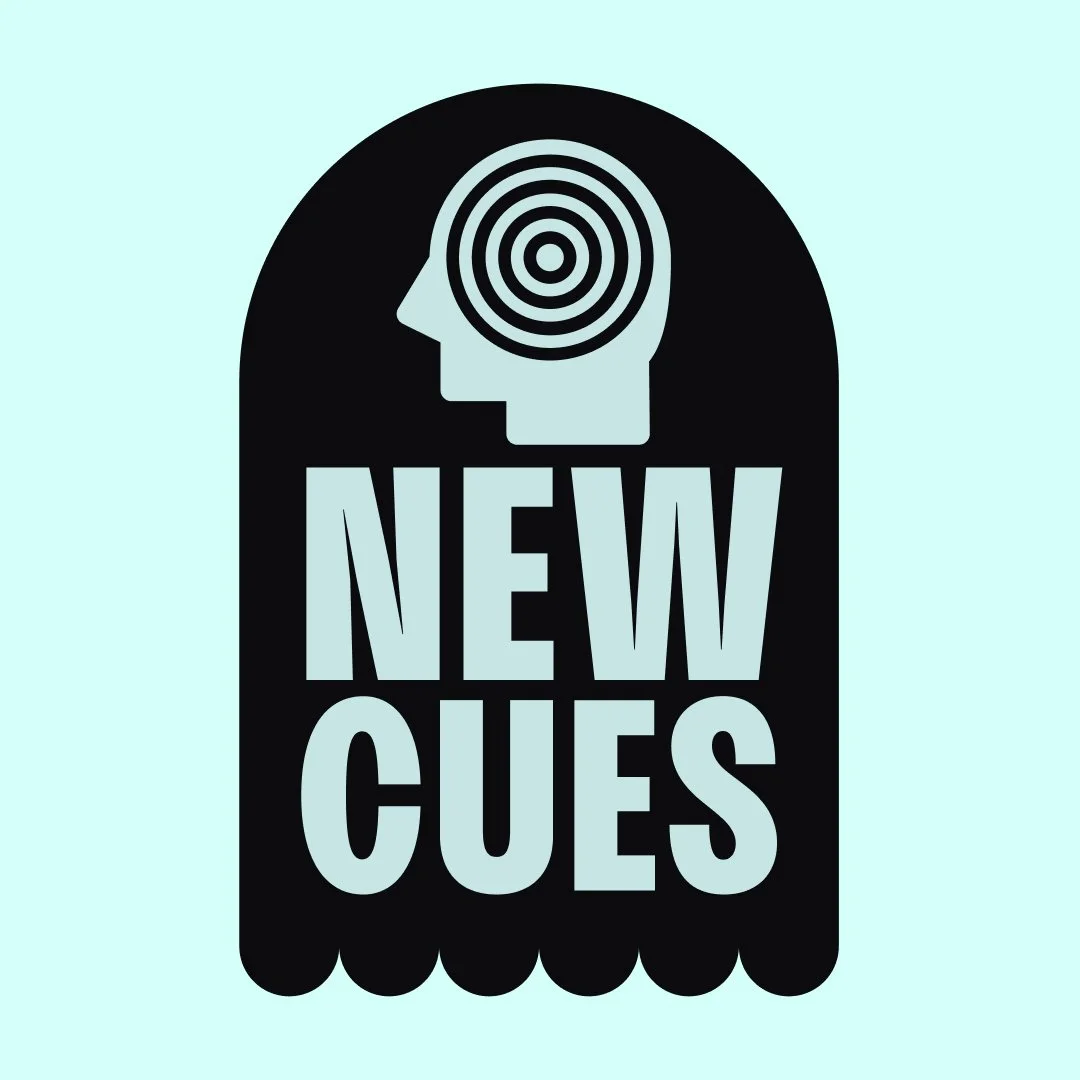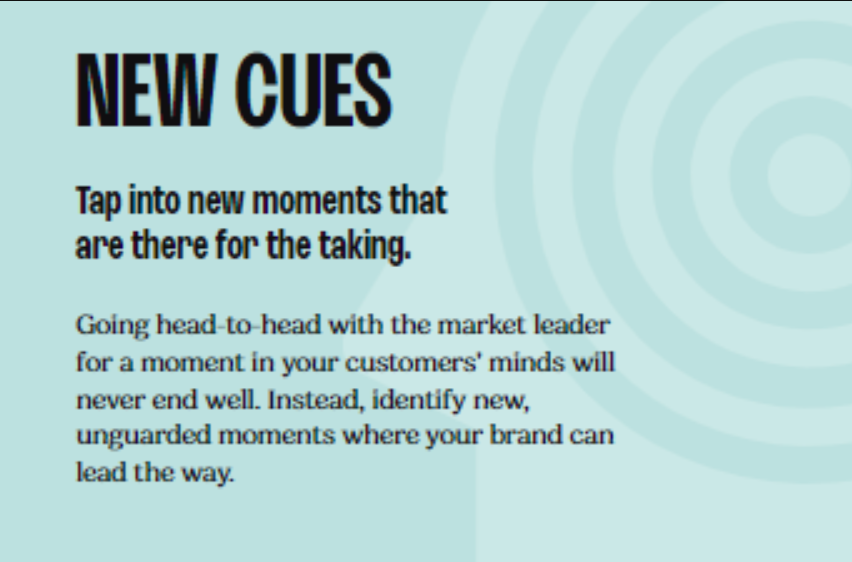Cheat Code: Why claiming new cues is crucial for challenger brands
Forget Google, TikTok and ChatGPT. The most important search engine is still the one in your mind, according to Hardhat's CEO, Dan Monheit. Mumbrella.
Life is abundant with new customer journeys. Next weekend is Mum’s 70th birthday, so I’d better put some thought into her present. Apparently, Tokyo is an incredible place to visit in spring. After a big weekend on the tiles, where’s good for a healthy lunch near work? I wonder if I could run a marathon this year… and on it goes.
It may surprise you to know that even in 2024, most customer journeys, and the searches they inspire, don’t start with a search engine at all; they start in our minds, within our memories.
Prompted by a thought, or in this case, a cue, we dig deep into the recesses of our grey matter, hunting for clues, experiences, or ideas from the past to help solve our current conundrum: lists of things you know your mum adores, airlines that fly to Japan, that salad Sophia was eating at her desk last week, and those new running shoes that just got banned from international events.
Only if our brains fail to come up with a known, satisfactory answer (brand) do we take our hunting elsewhere. We might dive down a search engine rabbit hole, trawl forums until the wee hours, or quiz family and friends for suggestions about what to do. Even then, we bias options we’re already familiar with.
All aboard the customer journey
All of this digging, hunting and quizzing reinforces the importance of building brand awareness and mental availability. After all, consumers can’t buy you if they don’t think of you at the right time or aren’t aware of your existence in the first place.
The challenge for challenger brands is that market leaders can afford to build general, ambient awareness. Coke, McDonald’s, Nike and even Telstra just seem to ‘exist’ around us, almost like air. Challenger brands, by definition (and budgetary realities) can seldom cover that much ground.
Thankfully, shooting for ambient awareness isn’t the only option. Professor Jenni Romaniuk of Adelaide’s famed Ehrenberg-Bass Institute identified the concept of Category Entry Points (CEPs). CEPs are the specific triggers that launch a buyer into a purchasing journey. They’re the first ad you see for Valentine’s Day, the scratchy throat that may or may not be a cold, or the rumbling tummy at 3 p.m.
CEPs offer challenger brands a completely different approach to building new cues. In practical terms, this means identifying, claiming, and fiercely protecting previously unguarded moments. Doing this effectively will ensure that your brand is the first to come to mind whenever the cue is triggered.
Taking Pleasure in the moment
Developing new cues begins by looking at the world through the consumer’s lens, considering the contexts they find themselves in and the questions they ask themselves, where a direct competitor is not already the obvious answer.
Nowhere is ‘cue ownership’ more prevalent than in categories like alcohol and chocolate. In both, there are more brands than we’ll ever need and more reasons to drink booze/scoff chocolate than we’ll ever admit.
Indeed, Snickers built its entire global relaunch around owning ‘hungry’. While there are countless reasons to venture down the confectionary aisle, Snickers saw an opportunity to go all in on being the bar to buy when you need to feel ‘really satisfied’.
Hunger is one thing, but what if instead, you need a break? Of course, your brain said KitKat before you finished reading the sentence. The brand has owned the ‘break time’ cue since 1957.
Meanwhile, if you’re an eighties or nineties kid who wants to say thank you, it’s tough to go past a box of Cadbury Roses, thanks to their insanely catchy “Thank You Very Much” jingle that still lives deep in our subconscious.
Knowing they’d hit a sweet spot, Cadbury Favourites also ran an excellent campaign in 2011, positioning the product as “What to bring when you’re told not to bring a thing”. Like all the best examples, this campaign was built on a genuine human moment hiding in plain sight.
Victoria Bitter hit upon their winnable moment in 1968 and still owns it to this day. Whether you’ve been shearing sheep, working down a mine or just imagining physical labour while tapping out emails, there’s no better beer to reward yourself with after a hard day’s work.
Corona Extra is what to drink when there’s ‘somewhere you’d rather be’. Unless you’d rather be eating an eye fillet, in which case a glass of Pepperjack is the only way to go. The Australian wine brand has built its entire proposition on being “Born to be enjoyed with steak.’
Stepping beyond food and booze, Beats by Dre seized a brilliant, unguarded moment at the 2012 London Olympic Games. The brand identified that athletes are commonly seen getting into ‘the zone’ by listening to music as they prepare for a big performance on the field, mat, pool, or track.
In an ambush marketing initiative worthy of its own gold medal, Beats sent the highest-profile athletes a unique pair of Beats branded headphones in their country’s official colours. The athletes lapped it up, providing the fledgling headphone brand with tens of millions of dollars worth of exposure despite not being an official sponsor of the games. Naturally, the IOC and brands that spent millions on sponsorship, including rival Panasonic, weren’t impressed, but Beats staked claim to the pre-performance moment, making it their own.
Making (up) moments
If you can’t find a moment, it’s perfectly acceptable to craft one yourself, like the Meat & Livestock Board, which invented the tradition of eating lamb on Australia Day, or Debeers, who taught the world that diamonds are the only way to demonstrate your undying love and commitment.
When Proctor and Gamble released their innovative, patented air freshener, Febreze, in 1996, their marketing strategy focused on eliminating smells like tobacco smoke and pet odours. Yet despite the millions spent on product development and marketing, sales tanked, and the brand was at risk of deletion.
In a last-ditch effort to save the brand, P&G conducted further research, only to discover that many people were nose blind. In other words, they fail to notice the smell of tobacco when they’re the heavy smoker or the reeking cat litter box when it’s them who own the nine cats. This nose blindness meant there was no obvious cue to trigger the use of the product.
In an attempt to find one, P&G reviewed hundreds of hours of footage of people cleaning, tidying, and doing housework. Sure enough, the team identified a moment after cleaning a room where people momentarily survey their handiwork before deciding the job is ‘done’ and moving on. It was an unguarded moment ripe for the taking
P&G immediately changed the tagline to ‘spritz and smile’ and ran a series of ads demonstrating that a spray of Febreze is the only way to really ‘finish a room’.
Sales doubled overnight and grew to $230 million within 12 months. Febreze is now a global success story and a key product in P&G’s household cleaning range.
Creating a new cue for your brand will mean there’s no need to slug it out with every competitor for every usage occasion. Instead, you can focus on relentlessly building the association between your brand and a specific trigger until they just ‘go together’, like peaches and cream, Aperol and tennis, or champagne and weddings.
Dan Monheit is CEO of Hardhat.


